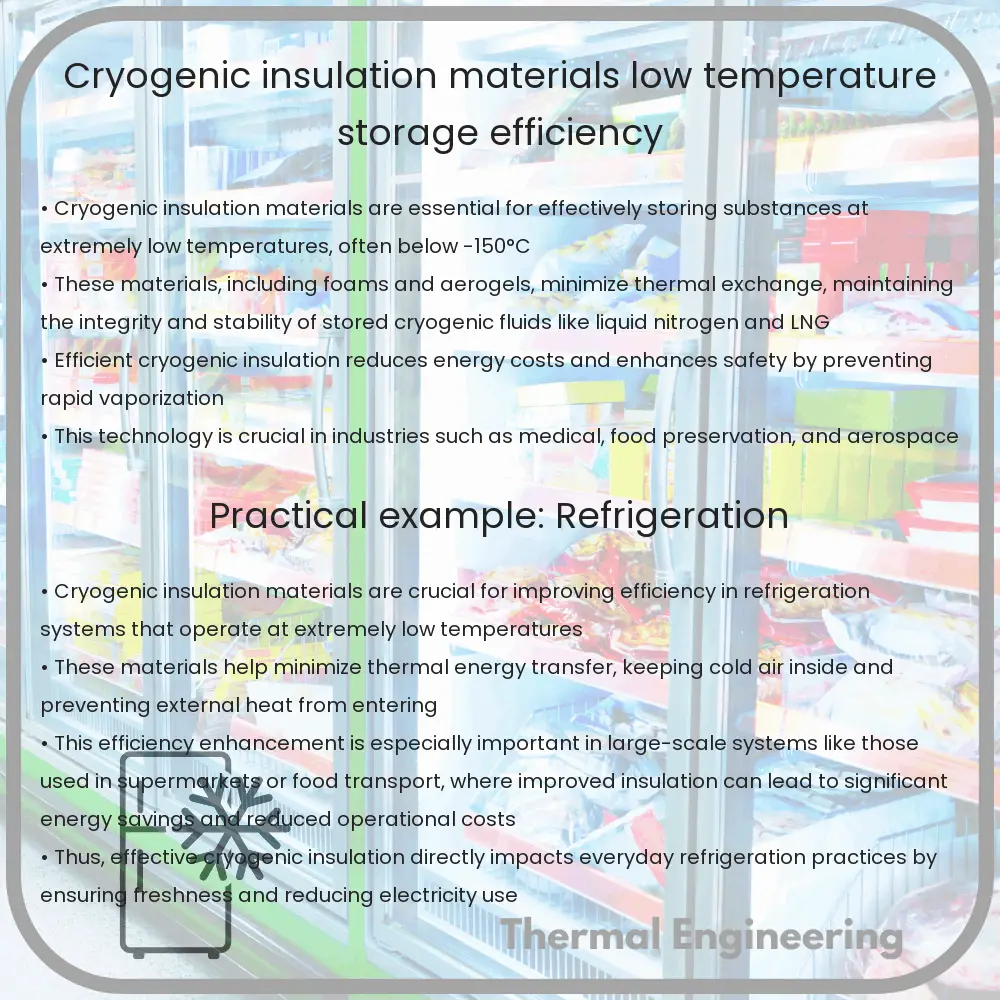Learn about cryogenic insulation materials, essential for maintaining extremely low temperatures in various industrial applications.

Understanding Cryogenic Insulation Materials
Cryogenic insulation materials are specialized substances designed to withstand extremely low temperatures, often required in the handling and storage of liquids like liquid nitrogen, oxygen, or helium, which have boiling points well below the freezing point of water. These materials play a crucial role in areas such as aerospace, medical, energy, and liquefied natural gas (LNG) industries, helping to maintain the efficacy and safety of low-temperature operations.
Importance of Efficient Cryogenic Insulation
Effective insulation in cryogenic systems is vital for several reasons. It helps in reducing the evaporation rate of cryogenic liquids, improving the efficiency of storage and transportation vessels. Insulation also plays a safety role by minimizing the risk of external elements coming in direct contact with the extremely cold surfaces, potentially causing materials to become brittle and leading to structural failures.
Types of Cryogenic Insulation Materials
- Cellular Glass: One of the most commonly used cryogenic insulation materials, cellular glass is known for its compressive strength, moisture resistance, and thermal performance. It operates effectively in temperatures down to -268 degrees Celsius (-450 degrees Fahrenheit).
- Polyurethane and Polyisocyanurate Foams: These foams are used due to their excellent insulation properties and low thermal conductivity, which is particularly effective in the range of -210 degrees Celsius (-346 degrees Fahrenheit) to -150 degrees Celsius (-238 degrees Fahrenheit).
- Aerogel: Known for its high surface area and low density, aerogel offers superior thermal insulation and is effective up to -200 degrees Celsius (-328 degrees Fahrenheit). Although more expensive, its performance in thin layers makes it attractive for space-constrained applications.
- Fiberglass: Fiberglass is widely utilized for its adaptability and thermal insulation properties, effective down to -190 degrees Celsius (-310 degrees Fahrenheit). It is commonly used in industrial applications like LNG storage and transport.
Choosing the Right Cryogenic Insulation
Selection of the appropriate cryogenic insulation material depends on various factors, including thermal conductivity, mechanical strength, moisture resistance, and environmental impact. Operational temperature range and thermal expansion coefficients must also be accounted for to ensure system integrity over the life of the application.
Applications and Real-World Uses
- LNG storage: Efficient insulation of storage tanks is crucial for maintaining the structural integrity of LNG, which is stored at -162 degrees Celsius (-260 degrees Fahrenheit). Materials like cellular glass and polyurethane play a key role.
- Medical applications: In the healthcare sector, cryogens are used for the preservation of biological samples. Reliable insulation ensures long-term viability of stored materials.
- Aerospace: Aerogels and other advanced materials are utilized to protect equipment and payloads from extreme temperatures encountered in outer space.
Conclusion
Cryogenic insulation materials are fundamental in a myriad of high-tech applications where maintaining low temperatures is crucial. As industries continue to push the boundaries of technology, innovation in insulation materials remains critical to achieving higher efficiency and safety in cryogenic environments.